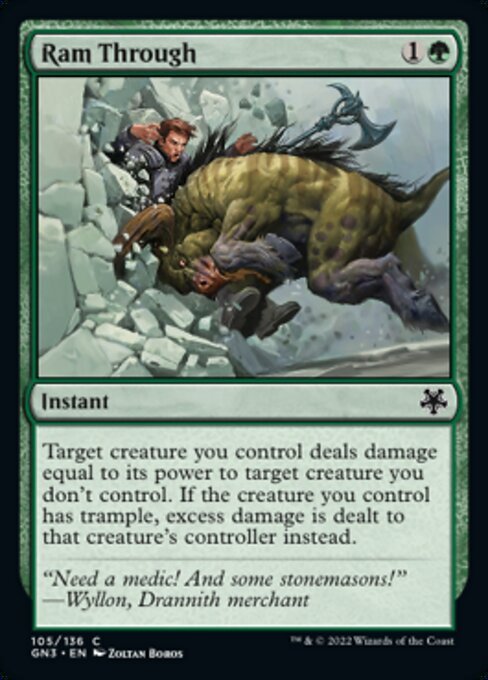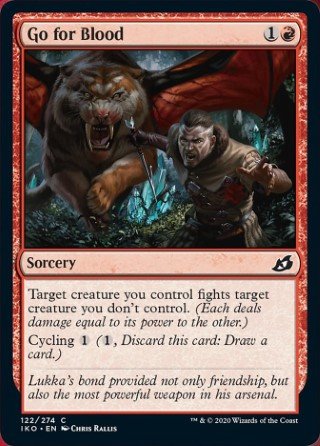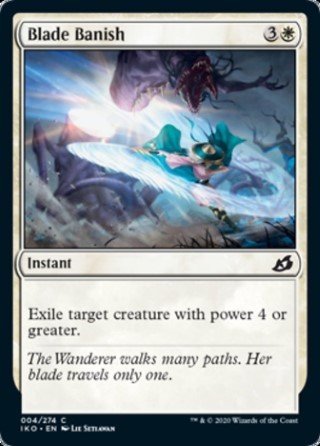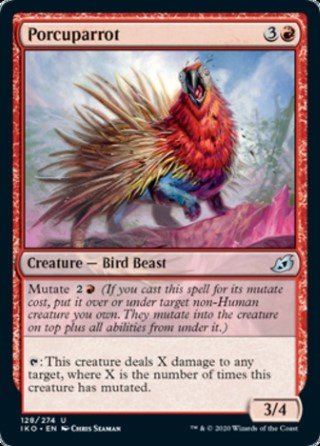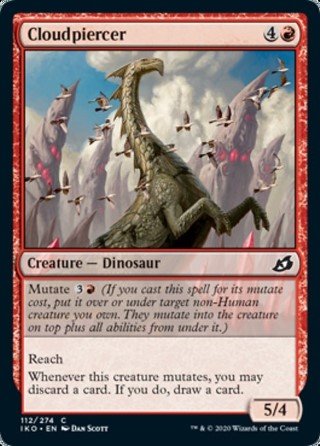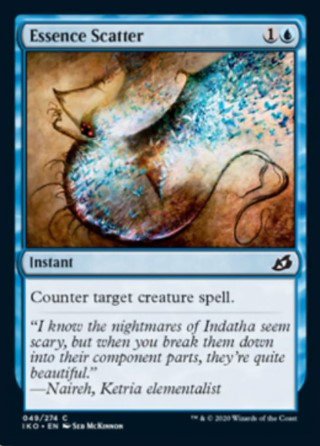Understanding Mutate In Ikoria Limited
Mutate is probably one of the most skill intensive keywords released in a while. There's a lot of depth to mutate, so let's go over how to use it properly and what options you have with Mutate.
1. How Mutate Works
Here's a quick rundown on how Mutate works. An example Mutate card is shown above.
Cast a Mutate card for it's Mutate cost. When you do so, target a non-Human creature that you own. (It says own, so if you took an opponent's creature, you can't Mutate onto it). When your Mutate card resolves, you can either it over or under the targeted creature so you create a pile of creature cards which represents one "super" creature and it will trigger all "Whenever this creature mutates..." triggers. This "super" creature has the power and toughness of the top creature of the pile and has ALL abilities of all creatures in the pile.
When your Mutate card resolves, if it no longer has a target, the Mutate card will just enter the battlefield as a regular creature. "Whenever this creature mutates..." triggers will not happen because it's not mutating. This is a key advantage Mutate creatures have over Auras; even if your opponents remove your original creature, the Mutate creature will still come into play and you will not get 2-for-1'd.
2. Stacking Mutate Creatures Properly
The easy part of stacking creature is deciding which creature goes on top. Usually, you want the highest P/T total creature to go on top. However, sometimes you might have some strange decisions to make, such as deciding whether or not you want a 2/4 on top or a 3/3 on top.
Here are two factors you should consider when deciding which creature goes on top:
- The general board state between you and your opponent. If you are the aggressor and you are racing, you'd probably want your flying creature to have the highest power possible to put a clock on your opponent. If you are defending, you'd probably want your deathtouch creature to have the highest toughness possible so it can be a durable blocker.
- The removal your opponent has. If your opponent is in red, the burn spells generally do 3 or 4 damage such as Fire Prophecy
 and Flame Spill
and Flame Spill , so if you want to avoid that, you'd want to put a 5 toughness creature on top. Or if your opponent is in red or green, which have the fight type spells such as Ram Through
, so if you want to avoid that, you'd want to put a 5 toughness creature on top. Or if your opponent is in red or green, which have the fight type spells such as Ram Through and Go for Blood
and Go for Blood , you want a toughness that is higher than your opponent's highest power. If your opponent is in white, you might want to have a lower power to avoid Blade Banish
, you want a toughness that is higher than your opponent's highest power. If your opponent is in white, you might want to have a lower power to avoid Blade Banish
Another factor to consider is whether or not to stack multiple Mutate creatures together or spread out the Mutate creatures or even bothering Mutating at all. Here are some more guidelines when to do each scenario:
- If your opponent is lacking removal, stack them all on top of each other so you can trigger "Whenever this creature mutates..." triggers multiple times. Generally you can tell whether or not they are lacking any because an early Mutate trigger will force removal out of your opponent.
- If your opponent has decent removal and a tapper like Checkpoint Officer
 , it's best to spread out the Mutate creatures. Or if you need to get in a few last points of damage, it might be best to spread out your Mutate creatures that grant evasion.
, it's best to spread out the Mutate creatures. Or if you need to get in a few last points of damage, it might be best to spread out your Mutate creatures that grant evasion. - If your opponent is a control deck, don't even bother Mutating. I played against a Mardu deck that had all removal and I ended up just playing my Mutate creatures out as creatures and didn't Mutate. This kept pressure on them until they finally out of removal.
3. Drafting Around Mutate
You actually don't need that many Mutate creatures to take advantage of the mechanic. This is a deck that I piloted to 7-2 in Premier Draft.

I only had 3 Mutate creatures, but in every game, I was able to Mutate one of my creatures and used that as my win condition. Notice how I'm running almost no Humans; the only Humans I'm running are Wingspan Mentor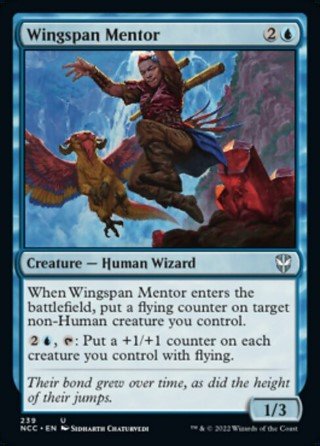 which let me pump my fliers. You want to make sure you can play a creature on turn 2 or 3 and then follow up with a Mutate creature on turn 3 or 4. In order to make sure this happens, ensure your deck has a lot of non-Human creatures in the 2 and 3 slot. If possible, make sure those non-Humans have text in their textboxes so those get carried over when you eventually Mutate your creature.
which let me pump my fliers. You want to make sure you can play a creature on turn 2 or 3 and then follow up with a Mutate creature on turn 3 or 4. In order to make sure this happens, ensure your deck has a lot of non-Human creatures in the 2 and 3 slot. If possible, make sure those non-Humans have text in their textboxes so those get carried over when you eventually Mutate your creature.
In my previous article, I was initially down on Cloudpiercer due to it's lackluster "Whenever this creature mutates..." trigger when compared to other Mutate 4CMC triggers, but turning your 1 power flier into a 5/4 flier on turn 4 is insane. Mutating your Sprite Dragon is Cloudpiercer is all upside because you still have Sprite Dragon's ability which you can use to keep growing that 5/4 flier. If your opponent can't answer that turn 4 5/4 flier, they will lose in 3-4 turns. I had an excellent support suite in this deck to make sure I could protect my creature and ensure my opponent couldn't build their own flier to stop mine.
I mentioned in my previous article that a Mutate deck should be in the Sultai colors, but you can utilize Mutate in any color combination as a very good tempo tool. You can still run other themes in your deck, but having a couple of Mutate 3/4 CMC cards in your deck gives you the ability to build your own bomb to either win the game or put out a creature to stop your opponent.
4. Interacting with Removal
Previously, I mentioned on how you should be utilizing your Mutate cards with your opponent's removal in mind. Let's imagine the following scenario.
Your opponent has passed their turn with open mana and you are pretty sure they have an instant speed answer. You have a non-Human creature in play already. At this point now, it depends what your Mutate creature is. If you have a Migratory Greathorn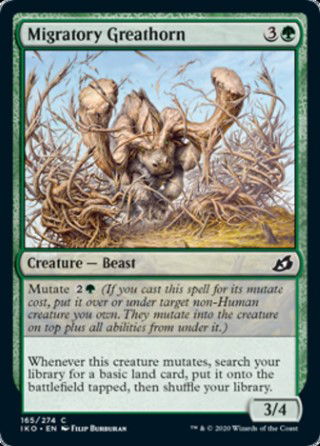 , a Cavern Whisperer
, a Cavern Whisperer , or a Dreamtail Heron
, or a Dreamtail Heron , you should likely just Mutate your creature. Let's say your opponent does have instant speed and they use it in response to casting your Mutate card. Well, notice how all these cards have Mutate costs that are 1 cheaper than their actual CMC. Your opponent used their removal spell to remove a 2 or 3 drop to prevent your Mutate trigger, but you just got to play one of your creatures a turn early. And if your opponent uses their removal spell to remove your newly mutated creature, then you will still get your trigger and in all of these cases, your Mutate trigger nets you a card in some way. And if they end up NOT having the instant speed removal, then you can attack, deal some damage, and if it comes back to your turn, then you can Mutate again to get more triggers. No matter what the outcome, you're getting something.
, you should likely just Mutate your creature. Let's say your opponent does have instant speed and they use it in response to casting your Mutate card. Well, notice how all these cards have Mutate costs that are 1 cheaper than their actual CMC. Your opponent used their removal spell to remove a 2 or 3 drop to prevent your Mutate trigger, but you just got to play one of your creatures a turn early. And if your opponent uses their removal spell to remove your newly mutated creature, then you will still get your trigger and in all of these cases, your Mutate trigger nets you a card in some way. And if they end up NOT having the instant speed removal, then you can attack, deal some damage, and if it comes back to your turn, then you can Mutate again to get more triggers. No matter what the outcome, you're getting something.
Now keep that scenario in mind when you have a removal spell. When deciding whether or not to use a removal spell on your opponent's Mutated creature, decide which case is the best for you. Sometimes, the correct move may be preemptively removing your opponent's non-Human creature to force them to play their Mutate creatures out without the mutate cost.
In my opinion, these are the two best ways to deal with Mutated creatures at the lower rarities. In the scenario I gave, Essence Capture is the cleanest answer in response to a Mutate cast because your opponent will not get a Mutate trigger nor will their Mutate creature come down. Checkpoint Officer can continually tap down a big Mutate creature and forces removal to get rid of it. Enchantment based removal is also a pretty good answer, but I believe every green deck should run one copy of Wilt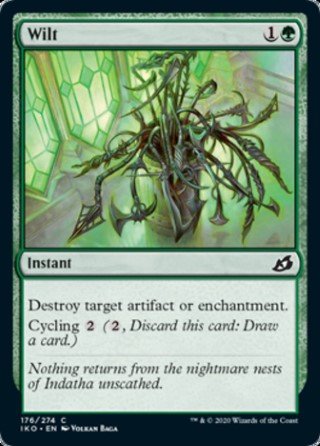 in the main and every white deck should have one copy of Light of Hope
in the main and every white deck should have one copy of Light of Hope in the main because enchantments are somewhat prevalent.
in the main because enchantments are somewhat prevalent.
Closing
Mutate is one of the deepest Limited mechanics Wizards has released in a good while. Understanding the board state and when to use removal will be keys in this environment as Mutate delivers what Wizards has promised in Ikoria: the chance to build your very own monster.
About Kagros:
Aether Hub News Team member. Writing thoughts on Magic news and fun gameplay!



